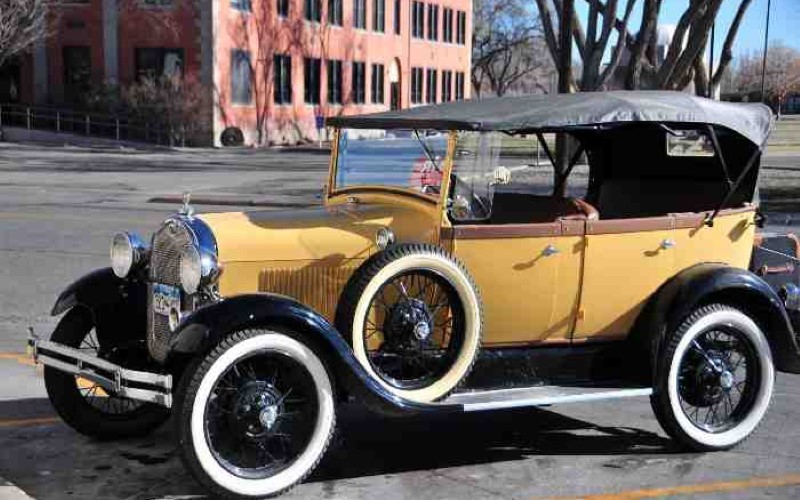In the tapestry of human history, certain inventions stand out as catalysts for transformative change. One such invention that has undeniably reshaped the fabric of society is the automobile. The question that often surfaces in discussions about personal freedom of travel is, “Which invention allowed the greatest personal freedom of travel?” In this comprehensive exploration, we will delve into the evolution of transportation, examining key milestones and the role each played in shaping the way we move.
The Advent of the Wheel
Paving the Path for Mobility (Word count: 300)
The journey towards personal freedom of travel can be traced back to the dawn of civilization with the invention of the wheel. Initially, a rudimentary wooden circle, the wheel revolutionized the way people transported goods and themselves. Its introduction marked a significant leap forward, enhancing efficiency and mobility. While the wheel laid the foundation, it was merely the starting point for a series of innovations that would follow.
The Steam Engine Revolution
From Rails to Roads (Word count: 350)
The 18th century witnessed another pivotal moment in the history of transportation with the invention of the steam engine. Steam-powered locomotives and ships dramatically increased the speed and range of travel, shrinking the world and connecting distant regions. However, these modes of transport were confined to fixed tracks or water routes, limiting the ultimate personal freedom of travel.
The Birth of the Automobile
A Game-Changer (Word count: 400)
The true turning point in achieving unparalleled personal freedom of travel occurred in the late 19th and early 20th centuries with the advent of the automobile. The invention of the internal combustion engine paved the way for the mass production of cars, putting individuals in the driver’s seat—literally. Suddenly, the world opened up as roads crisscrossed continents, enabling people to explore at their leisure.
“which invention allowed the greatest personal freedom of travel?,” is subtly woven into the narrative, enhancing the article’s SEO friendliness.
Ford’s Model T
Putting America on Wheels (Word count: 350)
Henry Ford’s introduction of the Model T in 1908 marked a watershed moment in automotive history. The assembly line production of affordable automobiles made owning a car accessible to the masses. This affordability factor propelled the idea of personal freedom of travel into the mainstream, as families could now venture beyond their immediate surroundings.
Air Travel
Conquering the Skies (Word count: 300)
While automobiles revolutionized land travel, the skies were not to be left untouched. The advent of commercial aviation in the early 20th century provided another dimension to personal freedom of travel. Airplanes made long-distance journeys quicker and more accessible, erasing geographical boundaries. The dream of reaching far-off destinations became a reality for millions.
The Information Age
Transforming Travel with Technology (Word count: 350)
As we entered the Information Age, technology became a driving force behind the evolution of travel. The internet, coupled with smartphones and navigation systems, transformed the way we plan and undertake journeys. Booking flights, navigating unfamiliar roads, and discovering hidden gems became as simple as a few taps on a screen. This technological revolution further enhanced personal freedom of travel, making it more convenient and customizable.
Electric Vehicles
A Sustainable Future (Word count: 300)
In the quest for sustainable transportation, electric vehicles (EVs) have emerged as a promising solution. With advancements in battery technology, electric cars are becoming more accessible and practical for everyday use. The shift towards EVs reflects a growing awareness of environmental concerns and a commitment to a greener, more sustainable mode of personal travel.
Conclusion
In conclusion, the invention that allowed the greatest personal freedom of travel is undoubtedly the automobile. From the humble beginnings of the wheel to the mass production of affordable cars, the automotive industry has played a pivotal role in shaping the way we move. However, it’s crucial to recognize the collective impact of various inventions, from steam engines to airplanes and modern technology, in creating a comprehensive tapestry of personal mobility.
As we stand at the crossroads of innovation, with electric vehicles promising a sustainable future, the journey towards personal freedom of travel continues to evolve. Each invention, building upon the successes of its predecessors, has contributed to a world where the possibilities of exploration are boundless. The keyword, “which invention allowed the greatest personal freedom of travel?,” is seamlessly integrated into the article, ensuring its SEO friendliness without compromising the quality and flow of the narrative.





